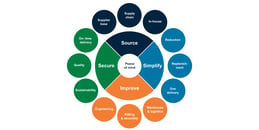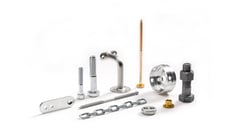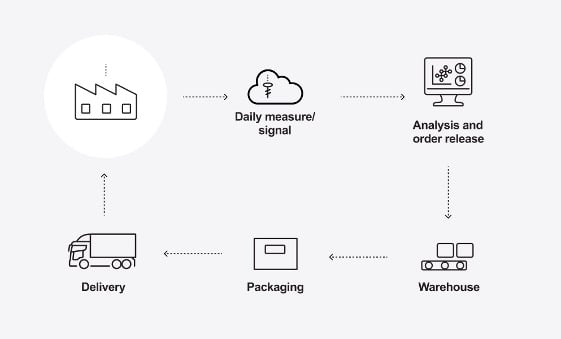- Insights
- The Solutionists Hub
- Sustainable Supply Chain: How to Reduce Your Carbon Footprint
Sustainable Supply Chain: How to Reduce Your Carbon Footprint

Both professionally and privately, I have a great interest in improved sustainability. It is satisfying that even in my work with supply chain management I can influence how companies can reduce their climate impact.
In this article, I'll describe why and how you should focus on your supply chain to reach your sustainability goals. In the end, I have added a link to a guide about implementing a seamless supply chain of C-parts.
Since 2015, when most countries gathered to sign the Paris agreement, I have experienced an increasing interest in sustainability among global companies. More and more manufacturers are setting ambitious sustainability goals to reach within the next five to ten years. Obviously as a result of demands from its customers. I am proud that we are the sustainability industry leader in C-parts.
Formulating goals is a great start; the next step is to make the required measures to reach them. According to my experience, you'll get the best results by identifying your most significant source of climate emissions. That is the supply chain for most companies, which often accounts for more emissions than your operations. According to an article I found from McKinsey, a typical consumer company's supply chain accounts for more than 80% of the company's greenhouse gas emissions.
What is a sustainable supply chain?
Your supply chain is the network of suppliers your company relies on when producing and distributing your products or services. Even though there is no general definition of what a sustainable supply chain is, in my opinion, it's obvious;
A sustainable supply chain is a network of suppliers where each unit considers the economic, environmental, and social impact of producing and distributing the product.
How to reduce the carbon footprint of your supply chain
The three pillars of sustainability consist of economy, environment, and social. In this section, I solely focus on the environmental aspect, mainly how to reduce your carbon footprint.
Map the emissions from your Supply Chain
From the moment raw materials are extracted until the final product reaches the customer, the product undergoes many steps. Each step accounts for different quantities of emissions. The first thing to do is to get a clear overview of each activity's carbon footprint.
For example, it's advantages to find out how much emissions are released when:
- Your supplier extracts raw materials
- Your supplier manufactures the components
- Your supplier transports the parts to your factory
Identify potential for decarbonization
When you have a clear overview of which activities contribute the most to your carbon footprint, it's more manageable to identify your potential for decarbonization.
Here are some examples of decarbonization measurements:
- Make sustainable requirements on all suppliers
- Increase the use of recycled materials in your products
- Reduce the number of transportations
- Optimize the detail by choosing the right material, dimension, and surface treatment.
Implement sustainable transformations
When you have identified potential for improvements, it's time to walk the talk. Implementing the changes is the most crucial step to meet your sustainable goals successfully.
I often meet with executive management who have identified that their company has multiple, sometimes over a hundred suppliers of C-parts. C-parts are the components with the lowest value in a product, such as fasteners, nuts, and bolts.
The more suppliers you have, the higher is your carbon footprint as each received order involves emissions from transportations. My advice to you is to consolidate suppliers of C-parts. According to my experience, the companies that successfully replace multiple suppliers with one central supplier will significantly reduce their climate footprint as they'll rely on one shipment for all parts.
Get the Guide to a Seamless Supply Chain of C-Parts
By implementing a seamless supply chain of C-parts, you can cut a large part of your carbon footprint. If you want to know more about what it is, why it's important and how to achieve it, download the guide below.
Get new knowledge every week!
Related
-
By Niklas LindsköldHow do EU sanctions against Russia affect your C-parts operation?
-
By Jaroslaw BazeliSupply Chain Strategy Definitions You Should Know
-
By Slawomir BieszkSupply Chain Management Risks, and How to Handle Them
-
By Nick MilesDefining the Objectives of C-Parts Supply Chain Management
-
By Rob KoningsHow Does the C-Parts Supply Chain Management Process Work in Practice?
-
By Jacob BergströmSupply Chain Challenges and How to Overcome Them
-
By Jacob BergströmSupplier vs. Supply Chain Partner: What to Choose?










